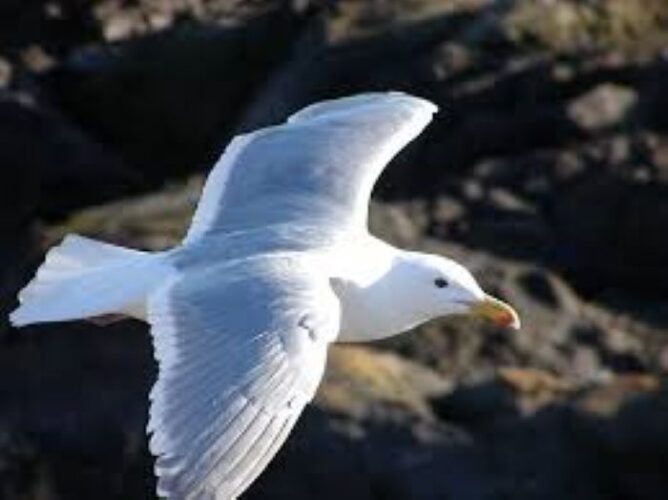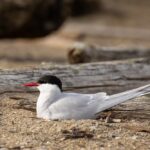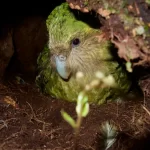Seagulls are a common sight in coastal areas around the world. With their noisy squawking and tendency to swoop in to steal your beach snacks, they have a notorious reputation. Yet despite their abundance, measuring and recording seagull dimensions like their wingspan has been tricky. This is complicated by the diversity of gull species categorized as “seagulls” and the challenges of gathering enough measurement observations from wild bird populations. Still, several studies have produced reasonable estimates for average seagull wingspan by species.
Defining the Seagull Population

The first challenge in determining seagull wingspan averages is defining what species qualify as seagulls. There are over 50 species of gulls from the Laridae family of water birds. However only about a dozen live along ocean coasts and only a subset of those are commonly referred to as seagulls. For the purposes of wingspan averages, this focuses on six key species:
● Herring Gull
● Great Black-backed Gull
● Western Gull
● Glaucous-winged Gull
● Ring-billed Gull
● California Gull
Conveniently, these also tend to be the most abundant and observable coastal species around public beaches, waterfronts and recreational areas. Establishing wingspan averages uses predominantly data on these true seagull varieties.
Wingspan Averages by Species
Several research efforts have narrowed down reasonably precise average wingspans for each seagull variety:
Herring Gull – 55 inches
This is the quintessential gray and white “seagull” in the minds of many people. Herring gulls sport a sharp yellow beak for cracking open sea creature shells. Their long, broad wings extend up to 55 inches on average from tip to tip.
Great Black-backed Gull – 60 inches
One of the largest gull species, great black-backed gulls flaunt a stark white front and dark charcoal gray wings and back. Fittingly, they boast an outsized wingspan averaging five feet across.
Western Gull – 52 inches
Western gulls patrol the Pacific coastlines or inland water bodies rather than the open seas. They can be identified by dark beaks and legs along with gray and white speckled plumage. When flying, their narrower wings stretch 52 inches wide.
Glaucous-winged Gull – 53 inches
The pale gray feathers of glaucous-winged gulls lighten to practically white wingtips. These contrast against darker wing edges and wing backs. Found along the northwest coasts of North America, their average wingspan hits 53 inches.
Ring-billed Gull – 49 inches
Ring-billed gulls migrate inland across much of the continental United States during winter months. Their iconic namesake comes from the black rings encircling their yellowish beaks. When airborne, their pointed wings reach 49 inches tip to tip.
California Gull – 53 inches
From their breeding grounds along North America’s interior, California gulls coast to Pacific beaches during winter. There they flaunt dark ginger feathers on their heads along with pale gray wings edged in black. Extended for flight, those slender wings average 53 inches wide.
The Seagull Average
Averaging these per species measurements provides an overall seagull wingspan estimate of 54 inches – or 4.5 feet across. This serves as a handy approximation for mixed flocks or less common species. However, sea and shore birds exhibit the extremes of wingspans based heavily on geographical range and dietary needs. Frigate birds at the upper end may stretch over eight feet while tiny least storm petrels measure under a foot across at maturity. So there still remains plenty of variation around that ballpark seagull figure.
Why Does Seagull Wingspan Vary So Much?
Like all birds, seagulls and their cousin gull species evolved wings tailored to their environments and food sources. The anatomy and flight dynamics dictate ideal wingspans for each’s survival strategy. Here are a few key factors driving differences:
● Wind and weather conditions by habitat
● Distances needing to be travelled while foraging
● Ability to take off quickly and maneuver precisely
● Capacity to carry heavier loads successfully
● Adaptation to seasonal conditions and migration routes
There are always tradeoffs, of course. Longer and wider wings mean more lift and stamina but reduce agility. Smaller wings sacrifice load capacity and distance for speed and rapid response. Nature strikes a balance for each species based on food, nesting sites and predator pressures. And wingspan correlates strongly to those ecological niches.
Tracking Regional and Seasonal Variations
Further muddying seagull wingspan averages are environmental impacts. As with other physical attributes, having enough nutrients from prey and habitat richness plays a key developmental role for chicks after hatching. And seasonal fluctuations have been recorded too.
For example, Western gull juveniles measured in central California over winter had noticeably smaller wings versus newly fledged chicks from rich southeast Alaskan habitats. Yet those California seagulls bulked up considerably after marine layer fogs brought swarms of rich plankton closer to shore in early spring.
So any single snapshot of wingspans – even if averaged – should account for climate and geographic differences within the population.
In Summary…
The diversity of gull species, food availability, seasonal impacts, and shelter conditions means seagulls flying along beaches exhibit a wide range of wingspans. However, sampling among the most common coastal gull varieties places their average wingspan around 54 inches fully extended. With enough observations from multiple sites and life stages, researchers can fine tune species-specific averages further. Yet even those come with variability that gives seagulls great adaptability season to season and location to location. It’s one key to their success coast to coast across dramatically different habitats.
So next time to see a chaotic cloud of seagulls swarming the beach, take a closer look at their outstretched wings flashing in the sunlight. Focus on a single soaring bird and visually measure its wingtip to wingtip width compared to your height as reference. Then consider what factors may contribute to it being a bit bigger or smaller than a typical seagull. The diversity within that average is key to the persistence of the species as a whole along every rocky coastline they call home.
If you enjoyed this article, you might also read this: Understanding the Migration Patterns of Arctic Terns

Stina is the expert behind BirdFacts.net, dedicated to sharing her passion and knowledge about birds. With a degree in Environmental Science and over 6 years of birdwatching experience, she brings both expertise and enthusiasm to her writing. Stina’s work aims to inspire appreciation for birds and promote responsible birdwatching. Follow her bird-filled journey on Instagram.





